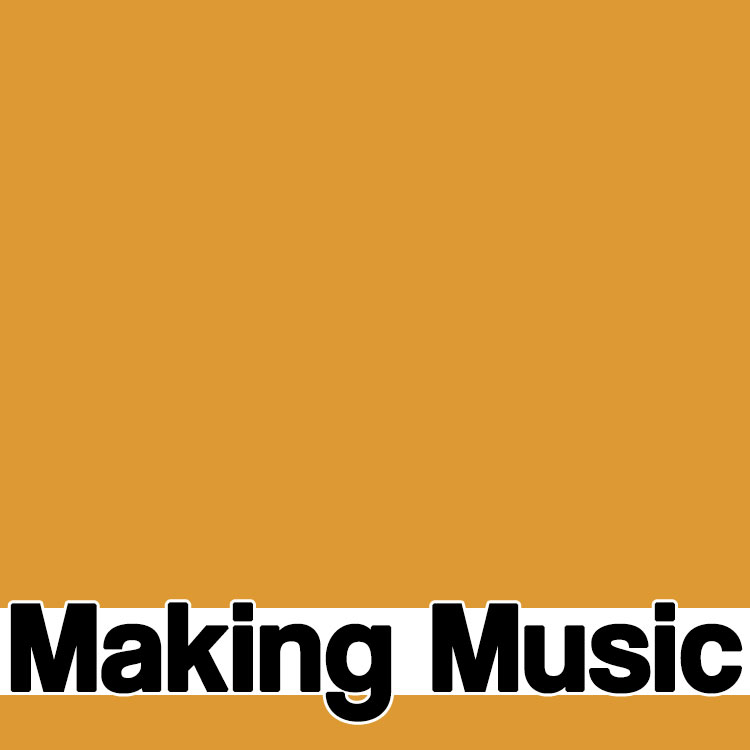The vocoder is one of the most enduring audio processing effects of all time. We explain how to make it sing. And talk and dance and mutter and play the drums…
Although the human voice is the most versatile and expressive of instruments, in true creative style, musicians still like to change and modify it. A vocal that sounds in some way different to other vocals will stand out and attract attention to a recording.
One of the first commercial recordings to feature voice processing was Sparky’s Magic Piano, released by Capitol in 1947. This landmark classic children’s story is still available today. It used a device called a Sonovox which was mechanical in nature and worked by pressing two small disks to the performer’s throat. Although it was not a vocoder and it worked in an entirely different way, the results were similar and many people assume the result was achieved with a vocoder.
Hooray for Homer
The vocoder was developed back in the 1930s by Homer Dudley who worked for Bell Labs. Its original purpose was to improve speech transmission over telephone lines, essentially by reducing content to allow more data to be sent over the line’s limited bandwidth. It was, in fact, also used during World War II to scramble telephone conversations between Franklin D. Roosevelt and Winston Churchill.

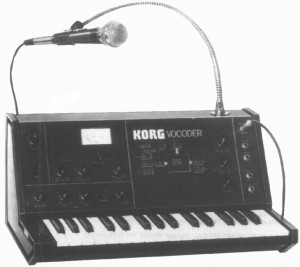

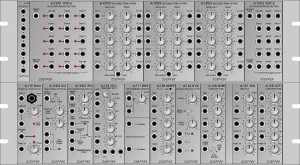
What’s in a name?
Tech terms
VCA
Voltage Controlled Amplifier, typically a synthesiser module that adjusts the volume of a signal according to its input. In a vocoder the controlling signal is derived by analysing the frequencies in the modulator.
Voiced/unvoiced
The part of a vocoder that detects voiced (tonal) and unvoiced (noise) sections in a speech signal and makes the vocoder react accordingly.
Harmonics
Frequencies higher than the fundamental pitch of a sound that give it its tone. Sounds with many harmonics make the best carriers.
Glide/Slew
A control that smoothes the change between two discreet values. It’s typically used in synthesisers to slide or glide between the pitches of two notes.
It’s not essential that you know exactly how a vocoder does its stuff in order to use one but it won’t do any harm either, and if you know what’s going on under the hood you’ll better be able to use it, perhaps in novel and unique ways.
The name ‘vocoder’ is derived either from VOice CODER, VOice enCODER or Voice Operated reCOrDER, depending on which source you read. A vocoder has two inputs called a carrier and a modulator and if you’re familiar with carrier and modulator terminology from FM synthesis you’ll be way ahead of us.
As the name suggests, the modulator modulates the carrier signal. In a vocoder, the modulator is usually a voice and the carrier is the signal that the modulation is imposed upon, usually a pad-type sound. This produces the typical ‘talking synth’ or ‘robot voice’ effect most commonly associated with vocoders.
Here’s the techy explanation. A vocoder analyses the voice and splits it up into frequency bands, much like a spectral analyser. It might have six, eight, ten, twelve or more bands. Filters are also used to split the carrier signal into the same number of bands which are controlled by VCAs so essentially they control the volume of the frequencies in the carrier signal.
Let’s say you say something at a low pitch. This will be analysed into the lower bands which, in turn, will activate the lower-band VCAs which will then pass the corresponding frequencies in the carrier signal. So, when you talk, the analytical filters output energy levels that correspond to the frequencies in your voice with the result that your voice’s energy patterns are superimposed on the carrier.
Carry on singing
Note that it’s the voice characteristics that are imposed upon the carrier, not the voice pitch, so to make your voice ‘sing’ you talk into the vocoder and generate the required notes by changing the pitch of the carrier, perhaps by playing a keyboard. With software vocoders, you’ll probably prerecord the pitches you need for the carrier and then apply the vocal modulator to this.

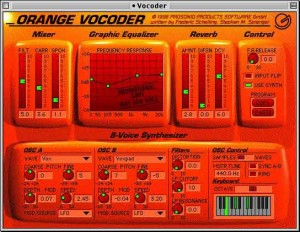
Computer power has meant that software vocoders don’t have to follow the format of their hardware forefathers and many have far more controls. These may include an adjustable number of frequency bands (the more bands, the higher the definition of the audio), bandwidth (narrow bands will produce a thinner sound), filter and resonance controls, envelope settings (which determine how quickly the modulator triggers the carrier) and more.
The trouble with fricatives
Fricatives are high-pitched noise-like sounds such as S, T, K, F and P produced by the mouth rather than the vocal tract, and they often don’t reproduce well on a vocoder. Some devices, therefore, add noise to duplicate the sound while others use a low pass filter to remove problem frequencies from the modulator.
If your particular vocoder isn’t playing ball, try compressing the vocal on the way into it or compress the audio track.
Pitch and carry
The range of effects you can create with a vocoder is vast. Although naturally associated with voice effects, vocoders can be used with all sorts of sounds and, indeed, they can create many unique sounds suitable for a wide range of music. Here are a few ways of using a vocoder with mainly non-vocal sounds.

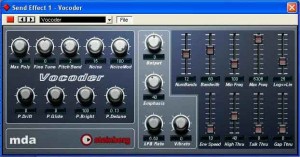
Try turning this around – use a drum loop as the carrier and your voice as the modulator. Try speaking individual words and phrases and then take a deep breath and roll out a whole load of words in one breath. Interesting…
We’ve said the carrier should match the modulator for frequency content and although most vocoders rely on a handful of tried and tested waveforms, it’s worth experimenting with other carrier sounds such as wind, surf, rushing water, and crowd noises and so on. Run a drum loop through this to produce a ‘natural’ drum sound.
Try reversing modulator and carrier signals. Knowing how vocoders work, you’ll realise that a static modulator (such as a pad sound) will probably not produce interesting results. Dynamic natural sounds, on the other hand, may produce some interesting and musical surprises.
Mix ‘n’ match
Not all vocoded effects have to be in yer face. Many intriguing and subtle effects can be created by mixing a vocoded signal with the original. Most vocoders let you set the balance between the original and the modulated signal, but if yours can’t do this, it’s usually easy enough to save the processed version, import it into your sequencer and adjust the balance between the two in the mixer.


You don’t have to vocode every sound in a track. Here’s an idea that may be easiest done with a drum track but it will work with vocals and other tracks, too. Cut out of a track-specific sounds and place them on their own track. On a drum track it could be the hi-hats or snare; with vocals, it could be certain words or phrases. Now you can process just those parts of a sound. In many ways, this can be more exciting than processing the entire track as the listener will be waiting for the section of music to come around that contains the ‘strange’ sound.
Combine the last two techniques. Create a processed version of individual drum hits or words, delay it a little and add it to the original to create a vocoded echo effect.
As with most musical techniques, using a vocoder benefits from experimentation. It’s a very versatile unit for adding a dash of interest and excitement to your music.
For more info…
Sparky’s Magic Piano if you really must own it but not cheap!
Collectible Records
Otherwise look on YouTube – you’ll find several versions.
DirectX and VST Vocoder plug-ins
In depth vocoder techniques, also an excellent source of synth information.
EMS (Electronic Music Studios) and details of their synths and vocoders plus vocoder manuals.



